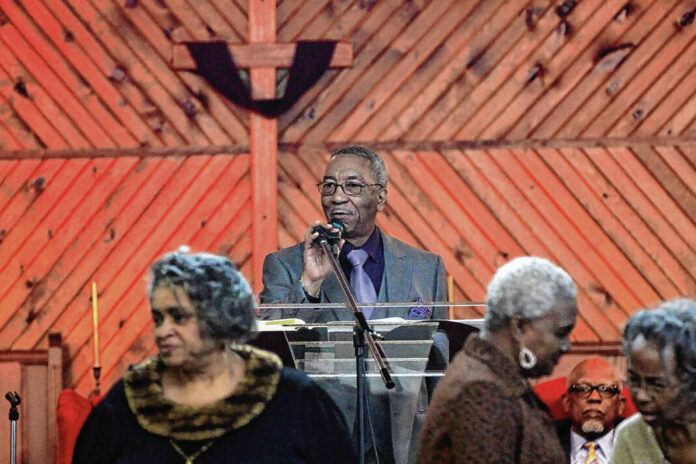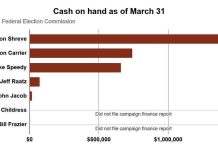A leader in African American cultural heritage nationwide will meet with local leaders of the Black community to discuss varied historic preservation efforts in a private gathering this afternoon at Second Baptist Church in Columbus.
Landmark Columbus Foundation, which cares for the city’s cultural legacy, is hosting the meeting featuring northern Indiana resident Tiffany Tolbert. She is associate director of the African American Cultural Heritage Action Fund at the National Trust for Historic Preservation based in Washington, D.C. The Action Fund is the largest preservation fund in U.S. history dedicated to the preservation of historic African American places, according to its background information.
Its role includes support for churches with a predominantly Black membership — as Second Baptist’s is — that need assistance to continue to survive and thrive.
In fact, the action fund’s effort launched in January is the Preserving Black Churches Project with $20 million in support from the Lilly Endowment. The project will examine everything from churches’ sustainability to future development and programming.
“We hope this program can make an impact long term,” Tolbert said.
The first grant cycle application process is expected to open later this month.
Those facts are important because Second Baptist, unlike many other local churches that have the support of a national denominational office, has wrestled with declining attendance to about 30 people per Sunday worship service — plus 70 to 80 people on Zoom — since the COVID-19 pandemic hit nearly two-and-a-half years ago. Second Baptist, located at 1325 10th St., became Bartholomew County’s first predominantly Black church 143 years ago when Black residents were not welcome at many other local white-dominated churches.
And the church’s history is directly woven into the county’s larger, overarching history, because the first two women ever to register to vote here in 1917 were Second Baptist members — a fact recently commemorated with a community-wide event.
Today, the church’s regular attendees also include those from a biracial and Latino background, according to Pastor Larry Rowe. He, like other Black pastors in this area, is uncomfortable with terminology from the past such as “Black churches.”
“That’s because we welcome and are open to anybody and everybody,” Rowe said.
Rowe said he is open to hearing information about the Preserving Black Churches Project.
“We always are open to receiving information that can help us do better and enhance the ministry of Jesus Christ and allow our church to move forward in these times,” Rowe said.
Blacks account for 2.3 percent of the county population, according to the U.S. Census Bureau. But minority leaders nationally regularly have said that minority issues should be important to all people and all ethnic groups.
In November 2017, the National Trust for Historic Preservation launched its African American Cultural Heritage Action Fund, a preservation campaign to preserve and protect places that have been overlooked in American history and represent centuries of African American activism, achievement, and resilience. Since launching the program, the Action Fund has raised $70 million and supported more than 200 preservation projects nationally.
In her position, Tolbert directs high-profile national preservation campaigns associated with African American cultural heritage such as the Nina Simone Childhood Home, and the John and Alice Coltrane Home, according to her online biography.
Tolbert also will be a part of Landmark Columbus’ public meeting “Progressive Preservation Talks” at 5:30 p.m. Tuesday at the Columbus Area Visitors Center, 506 Fifth St. Also on hand for that gathering will be Marsh Davis, president of Indiana Landmarks, the nation’s largest statewide preservation organization, with a membership exceeding 8,000 and a network of field offices throughout Indiana.
“The African American Action Fund is to support efforts to tell a fuller (preservation) story,” Tolbert said, speaking by phone from her home office in Hobart. “These are stories that make up all the people of a particular community or place. That includes all people of color — African American, native American, Latino, Asian, Pacific Islander, LGBTQ and others. It’s looking at something and asking ‘How do we expand that story and not just focus on one selective part?’”
Some people have asked Tolbert if her work has become even more important in the past few years with so many issues related to Blacks and equality making headlines.
“My work always has been relevant,” Tolbert said. “It’s probably just a little more in the forefront now.”
She added that the fund perhaps has visibly “elevated” Black causes and efforts nationally.
“We look at how preservation literally helps us progress (into the future),” Tolbert said. “And we look at how we can practice preservation that allows everyone to be a part of it — not just how it has traditionally been the past 50, 60 or even 100 years.”
Tolbert knows well the Indiana preservation landscape as a former employee of Indiana Landmarks.





